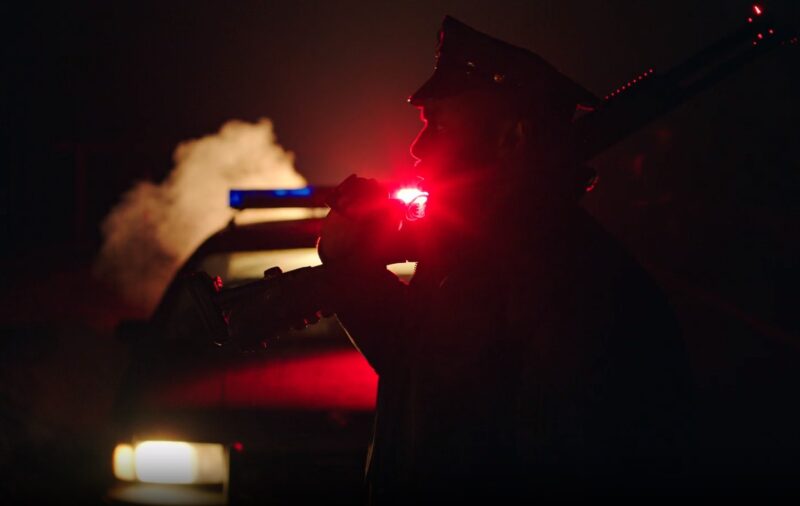The Garden State, often portrayed in popular culture as a hub for organized crime, continues to grapple with the presence of Mafia figures. Despite the evolution of criminal activities and the rise of various other gangs, the influence of traditional mob families persists.
The DeCavalcante family, known for their significant role in shaping the underworld, serves as a key example of the Mafia’s enduring legacy in the area. Their story, intertwined with the broader narrative of organized crime, offers insights into the complexities and transformations within this clandestine world.
Now, let us discuss the current state of affairs in the state.
The Current State of the Mafia in New Jersey

Organized crime in the area has undergone significant changes over the years. Recent federal prosecutions reveal that traditional Mafia activities, although diminished, continue to operate. Cases involving drug trafficking, extortion, and labor racketeering highlight the Mafia’s ongoing presence.
One notable instance involves Charles “Beeps” Stango, a reputed caporegime, who was sentenced in 2017 for his involvement in a murder plot. This case, among others, underscores the fact that despite facing challenges from other criminal organizations and law enforcement crackdowns, the Mafia still maintains a foothold in the region.
The decline in the Mafia’s power can be attributed to various factors. Legalized sports gambling and a crackdown on opioids have cut into their traditional revenue streams. Additionally, sweeping indictments in past decades have disrupted their hierarchy, leading to a decrease in their numbers and influence.
At their peak in the late 1980s and early 1990s, there were an estimated 800 Mafia associates in the state, a number that has since dwindled. Comparatively, today’s mobsters in the area are not as sophisticated as their counterparts involved in high-end internet fraud, such as Asian, Russian, or African organized crime groups.
This shift reflects a broader trend in the world of organized crime, where traditional methods are being replaced by more technologically advanced operations.
The DeCavalcante Crime Family
| Position | Name | Tenure | Notable Events/Characteristics |
|---|---|---|---|
| Boss | Stefano Badami | 1920s–1955 | Murdered in 1955. |
| Filippo “Phil” Amari | 1955–1956 | Retired. | |
| Nicholas “Nick” Delmore | 1956–1964 | Died in 1964. | |
| Simone “Sam the Plumber” DeCavalcante | 1964–1982 | Retired in 1982. | |
| Giovanni “John the Eagle” Riggi | 1982–2015 | Died of prostate cancer in 2015. | |
| Charles “Big Ears” Majuri | 2016–present | Current boss. | |
| Underboss | Sam Monaco | 1920s–1931 | Murdered in 1931. |
| Filippo “Phil” Amari | 1931–1955 | Promoted to boss. | |
| Louis “Fat Lou” LaRasso | 1957–1980s | Demoted, murdered in 1991. | |
| Girolamo “Jimmy” Palermo | 1980s–2004 | ||
| Consigliere | Francesco “Fat Frank” Majuri | 1957–1983 | Died in 1983. |
| Stefano “Steve the Truck Driver” Vitabile | 1983–2006 | Sentenced to life in 2006, overturned in 2008, released in 2013. | |
| Frank “Goombah Frankie/Shipe” Nigro | 2006–2016 | Arrested in 2015. | |
| Giuseppe “Pino” Schifilliti | 2016–present | Current consigliere. |

The DeCavalcante crime family, often cited as an inspiration for “The Sopranos” TV series, has a storied history in the region’s underworld.
Tracing its origins back to the early 1900s, the family was not recognized by The Commission, organized crime’s governing body, until the reign of Simone “Sam the Plumber” DeCavalcante in 1964.
Before this recognition, the family’s factions in Newark and Elizabeth were embroiled in a brutal battle for control, culminating in the murder of boss Stefano “Steve” Badami in 1955.
Under Sam the Plumber’s leadership, the family expanded its operations, going into various criminal activities including unions, construction, bootlegging, waste management, and more.
Despite their expansion and success, the DeCavalcante family often found themselves overshadowed by the more prominent Five Families of New York, struggling for respect within the criminal underworld.
The family’s influence extended beyond the local area, reaching into Philadelphia, Atlantic City, Las Vegas, and Miami. Their control over construction in New York City was particularly notable, demonstrating their reach and power.
Like many Mafia families, the DeCavalcantes faced internal strife and law enforcement pressure, leading to a decline in their power and influence. The DeCavalcante family is not the powerhouse it once was. Law enforcement sources suggest that the organization’s criminal toolbox hasn’t kept pace with other global crime syndicates.
Nevertheless, with around 40 made men and 50 associates, the family maintains alliances with other major crime families and continues to be a significant player in the region’s organized crime scene.
The Mafia’s Influence on Local Businesses and Society

The Mafia’s impact on local businesses and society in the Garden State is multifaceted. Their involvement in legitimate businesses, particularly in sectors like construction and waste management, has been well-documented.
Labor racketeering, a traditional Mafia venture, involves taking control of workers at construction sites and demanding payouts from builders. This practice not only affects the economy but also the integrity of labor unions and the construction industry. Political corruption is another area where the Mafia’s influence has been felt.
Historically, they have infiltrated the political system, affecting governance and law enforcement efforts to combat organized crime. This infiltration has led to a complex relationship between the Mafia, law enforcement, and political entities.
Public perception of the Mafia has been shaped by both real events and their portrayal in media and popular culture. While some view them with a sense of romanticized intrigue, the reality of their activities and the harm they cause to communities is undeniable.
The societal impact of the Mafia extends beyond their criminal activities, influencing cultural narratives and public discourse. The Mafia’s presence in the Garden State, while not as dominant as in the past, continues to be a concern for law enforcement and society at large.
Their ability to adapt to changing circumstances and maintain a level of influence speaks to the resilience of these criminal organizations.
FAQ
How Does Law Enforcement Tackle Organized Crime in New Jersey?
Learn about the strategies and challenges faced by law enforcement agencies in combating Mafia groups and organized crime in the state.
How Accurate is the Media’s Portrayal of New Jersey Mobsters?
Compare the depiction of New Jersey’s Mafia in movies and TV shows with the realities of organized crime in the state.
How Can the Public Stay Informed and Safe Regarding Mafia Activities?
Offer advice on staying informed about organized crime in the area and tips for community safety and awareness.
Are Younger Generations Still Drawn to Organized Crime in New Jersey?
Examine the trends and factors influencing the involvement of younger individuals in Mafia activities in the modern era.
Closing Thoughts
The enduring presence of the Mafia in the Garden State is a testament to the complex and evolving nature of organized crime. While their power and influence have waned in the face of law enforcement efforts and the rise of other criminal organizations, they remain a significant part of the region’s underworld.
The story of the DeCavalcante crime family, in particular, highlights the historical depth and ongoing relevance of the Mafia in the area.

